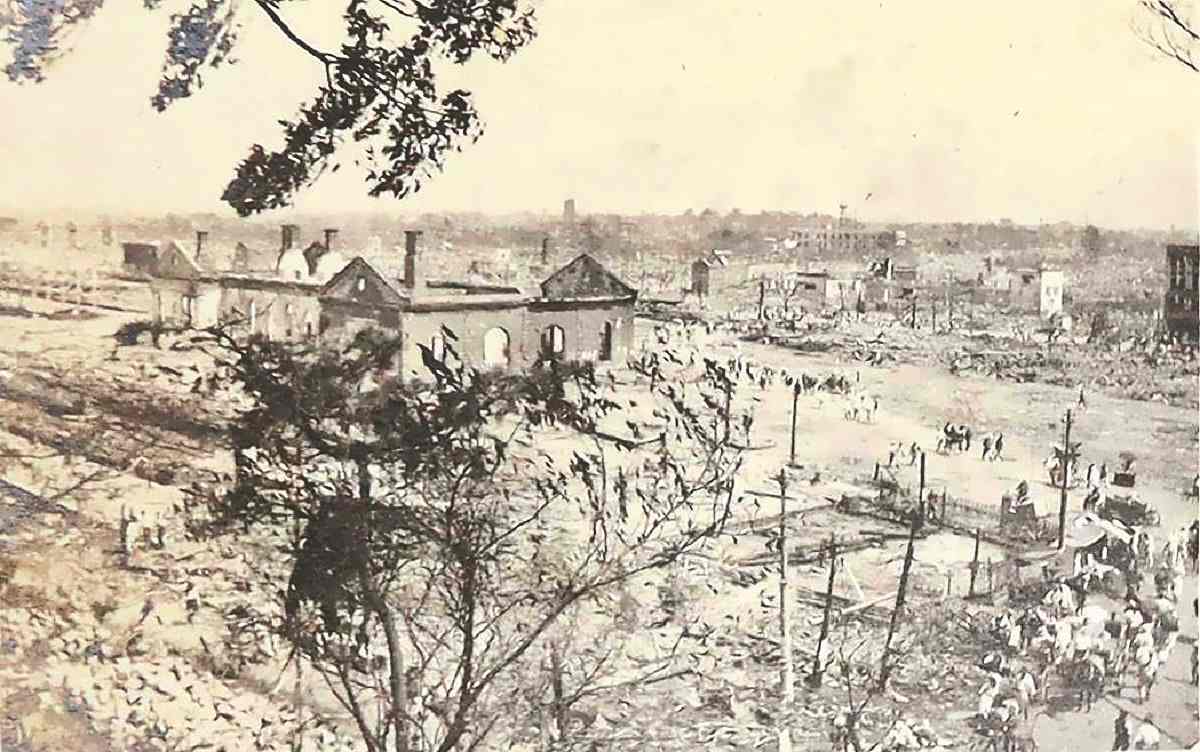Japanese Aristocrat’s Photo Albums Depict Devastation Following Great Kanto Earthquake

Debris surrounds the severely damaged Ryogoku Kokugikan sumo arena.
7:00 JST, September 2, 2023
One hundred years after the Great Kanto Earthquake, a collection of photographs taken in its aftermath provides a graphic glimpse of the devastation it caused in the Tokyo region.
As few people who experienced the earthquake are alive, records such as these images are an invaluable resource to shed light on the situation in the capital when disaster struck on Sept. 1, 1923.
The albums were compiled by Katsukuni Mizuno, who captured images of the scorched urban landscape after fires triggered by the earthquake devastated large areas of the capital.
Born in 1904 into an aristocratic family, Mizuno was a 19-year-old member of the photography club at a school when the earthquake struck. He lived in area that lies in present-day Bunkyo Ward, Tokyo.
Mizuno, who did not take all of the photographs in the collection, compiled three albums with 152 pictures taken in Tokyo and Kanagawa Prefecture in the aftermath of the disaster.
“As soon as the massive earthquake hit, I evacuated to Ushigome,” reads text on the first page of one album.
A photograph dated Sept. 1, 1923, showed kimono-clad evacuees and items people appeared to have rescued from their homes.
Mizuno recorded when and where the photographs were taken, and some feature precise descriptions of the scenes.

A photograph taken in Ueno, Tokyo, after the 1923 Great Kanto Earthquake captures the scale of the devastation.
A photograph of a smoke-filled landscape appears to have been taken from Kudan-Sakaue in present-day Chiyoda Ward, according to the caption, which reads, “Smoke from Marunouchi and Iidamachi merged over the Holy Resurrection Cathedral [in Kanda], completely enveloping Ueno and Asakusa.”
A photograph dated Sept. 3 shows bodies on train tracks. “Nobody is dealing with [the corpses],” Mizuno noted.
“This is an incident unprecedented in the world,” another caption reads, referring to the death toll of more than 80,000 announced by the army.

Katsukuni Mizuno is seen circa 1929.
Mizuno took the albums to the countryside when he evacuated from Tokyo during the World War II, according to his daughter, Yoriko Ueda, 88, and son, Katsuyuki, 79, who has preserved the collection.
Rei Hasegawa, an associate professor at Kogakkan University and an expert on Japanese history, is researching materials owned by the Mizuno family.
“The albums reveal the sudden impact on the daily lives of ordinary people,” Hasegawa said. “They also offer a journalistic perspective.”
The albums can be seen at Hibiya Library and Museum in Chiyoda Ward, Tokyo, in a special exhibition on Tokyo’s restoration, which opened Friday.
Related Tags
"JN Specialities" POPULAR ARTICLE
-

The Japan News / Weekly Edition (12/12-12/18)
-

English-language Kabuki, Kyogen Entertain Audiences in Tokyo; Portland State University Professor Emeritus, Graduates Perform
-

Noodle Dining Shunsai / Rich Oyster Ramen to Savor at Odasaga; Experienced 68-year-old Owner Creates Numerous Ramen Varieties
-

The Japan News / Weekly Edition (12/5-12/11)
-

People Keep Loved Ones’ Ashes Close in Special Jewelry, Small Urns as Unique Way to Memorialize Them
JN ACCESS RANKING
-

Keidanren Chairman Yoshinobu Tsutsui Visits Kashiwazaki-Kariwa Nuclear Power Plant; Inspects New Emergency Safety System
-

Imports of Rare Earths from China Facing Delays, May Be Caused by Deterioration of Japan-China Relations
-

University of Tokyo Professor Discusses Japanese Economic Security in Interview Ahead of Forum
-

Japan Pulls out of Vietnam Nuclear Project, Complicating Hanoi’s Power Plans
-

Govt Aims to Expand NISA Program Lineup, Abolish Age Restriction






















